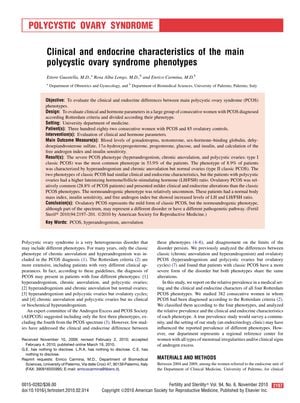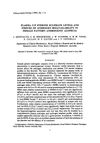Clinical and Endocrine Characteristics of the Main Polycystic Ovary Syndrome Phenotypes
March 2010
in “
Fertility and Sterility
”

TLDR Different types of polycystic ovary syndrome (PCOS) have varying severity, with Type I being the most severe and common.
The 2010 study investigated the differences among polycystic ovary syndrome (PCOS) phenotypes in 382 women with PCOS and 85 ovulatory controls. The PCOS women were classified into four phenotypes: Type I and II classic PCOS, ovulatory PCOS, and normoandrogenic PCOS. Findings indicated that Type I classic PCOS was the most prevalent and severe form, with high levels of LH and LH/FSH ratio, androgen excess, and insulin resistance. Ovulatory PCOS was a milder form with less severe clinical and endocrine features, while normoandrogenic PCOS, which was less common, presented with normal BMI, insulin sensitivity, and androgen levels but increased LH levels, suggesting it might be a distinct disorder or have a different pathogenesis. The study highlighted the importance of phenotype classification in PCOS for better research and clinical management.




